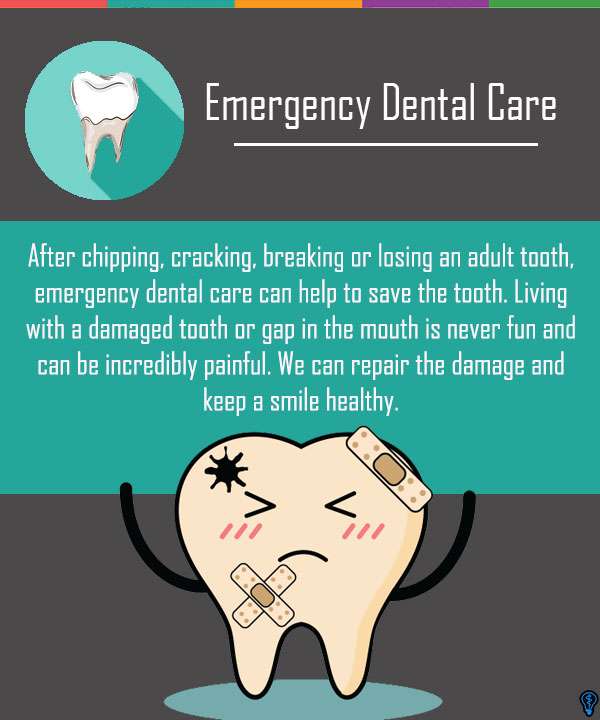Tooth Extraction Miami, FL
While our focus at Dr. Rita The Smile Designer is on preventative care, we perform tooth extractions when needed. We aim to avoid dental extractions by helping you to achieve and maintain optimal oral health. Our comprehensive examinations, periodic evaluations, professional dental cleanings, and thorough care and counseling are designed to optimize your oral health today and for many years to come. As a family cosmetic, restorative, and implant dentist, we strive to make sure your smile remains healthy, beautiful, and intact throughout your lifetime. If you are experiencing discomfort or your tooth is in need of repair, we invite you to call our dental office at (305) 858-0505 to schedule an appointment. During your examination, we will determine if your tooth can be salvaged, or if a tooth extraction is the best option for preventing the spread of infection and eliminating your discomfort. In our dentist office, we take the necessary steps to ensure your comfort. Regardless of the procedure, our goal is your safety and comfort made to be felt in a warm and relaxing environment.
The process of having a tooth extraction
The type of extraction needed is determined by the position of the tooth in the mouth. If completely exposed and above the gum line, a tooth will be removed in a traditional manner using instruments designed to safely and gently elevate the tooth out of the bony socket. If impacted, or sitting partially or completely below the gum tissue, as several wisdom teeth are found, a surgical extraction will be necessary. In this case, a conservative incision will be made in the gum line to expose the underlying tooth. When readily exposed, the tooth will be gently removed either intact or in multiple pieces.
The area to be treated will be completed anesthetized, or numb, prior to initiating the extraction. Various forms of anesthesia are available and the options presented during the planning appointment. The patient may experience slight pressure, or tugging, as the tooth is elevated out, but pain is not expected and should not be felt. Once the extraction is complete, the socket is cleansed, disinfected,and a suture placed as necessary. Residual bleeding is controlled and the patient is dismissed safely and comfortably. Home care instructions are given and pain medications prescribed as indicated. Our goal is to provide a safe and relaxing environment for our patients during this, and all, procedures.
How to care for your mouth after a tooth extraction
At Dr. Rita The Smile Designer, we perform a tooth extraction in the least invasive manner possible to shorten the recovery time. Most of our patients will recover in the office while we make sure the bleeding has ceased and discomfort is minimal or nonexistent. In certain cases, we may recommend someone pick you up after having a tooth extraction. At home, you will want to rest, while taking a nap is also helpful. Be sure to drink plenty of water, avoiding fluids that are too hot or cold, as this could lead to sensitivity during the first couple of days. Avoiding use of a straw during the first few days, as the suction could cause the affected area to start bleeding. How the procedure was completed will influence how long it takes to recover. Generally, any swelling will go down after a few days.
In our family dentist office, we recommend taking ibuprofen to help reduce the swelling and to use an ice pack or cold compress for 15 minutes at a time. During your recovery, you should eat foods that are high in nutrition but soft in texture. Taking in fruit, yogurt, protein powder, and vegetable smoothies is an excellent way to keep your nutrition levels up without needing to bite down on anything hard or abrasive. As you add foods back in, be sure to start with things that are soft, like noodles, and gradually work your way up to a full diet. While caring for your mouth after a tooth extraction, make sure to keep it as clean as possible. Maintaining food accumulation and bacterial counts to a minimum will decrease the risk of inflammation and infection. Brush your surrounding teeth normally while carefully avoiding the surgical site. Rinsing with water and baking soda, and the use of an antibacterial mouthwash, will keep the extraction site clean and reduce the incidence of complications. We may want to see you for a follow-up appointment.
The body’s normal healing process begins immediately after the tooth extraction. Formation of a blood clot inside the tooth socket begins this healing cascade and helps to stop the bleeding. To aid this, we instruct you to bite on a gauze pad for 30 minutes immediately following the extraction. This may need to be repeated should oozing persist either in the office or at home. The use of a moist teabag in the same manner also assists in reducing, or stopping, the bleeding (the tannic acid in tea acts as a blood constrictor).
Post extraction pain and swelling may be expected. Applying an ice pack or an unopened bag of frozen peas or corn will minimize the swelling. Take medications as directed by our office and call us should these not alleviate your symptoms.
Prescribed antibiotics should be taken as directed and until finished, even if pain or signs of infection are gone. We ask that you drink plenty of fluids and refrain from eating hard or abrasive food on the day of the extraction and for two to three days days after that. This will reduce the risk of developing a “dry socket” (painful and inflamed tooth socket).
Additionally, please refrain from alcohol consumption, pressure-related activities, smoking, the use of drinking straws, and the need to forcefully blow your nose. If necessary, these may be resumed after seventy-two hours from the day of extraction.
Normal dental brushing and flossing should resume after twenty-four hours. A clean mouth is key in the healing process.
If you experience severe pain, heavy bleeding, persistent swelling, or a reaction to medication please contact our dental office for assistance.
Check out what others are saying about our tooth extraction services on Yelp: Tooth Extraction Miami
Miami Tooth Extraction
Signs that you might need a tooth extraction
At Dr. Rita The Smile Designer, we practice preventative care and can help in an emergency situation. If you feel intense discomfort in your tooth or your jaw, give us a call since this could be a sign of a dental abscess or severe infection. Simultaneously, if it hurts when you bite down or chew this can also be an indication of a cavity or infection. Other signs like puss or bleeding indicate that you should call 3058580505 to schedule an appointment with our family dentistry office right away.
What you should know about wisdom teeth removal
If you still have your wisdom teeth, you may need to have them removed. We invite you to schedule an appointment with our dentist office so that we can examine your teeth and take X-rays. The information gathered will help determine whether or not you should keep your wisdom teeth. Not everyone needs to have them out; extraction depends on several factors. The health of the teeth, their position in the mouth, and how they affect the health of the teeth around them are just a few factors used in determining whether or not they should be removed. The process of removing wisdom teeth is roughly the same as any other tooth with the exception of when and why we perform the procedure. At Dr. Rita The Smile Designer, we typically recommend wisdom teeth removal in the teenage years or in the early twenties. General extractions are more common as people age and have a tooth that needs to be removed due to severe infection or significant damage. To find out whether or not you should keep your wisdom teeth, call (305) 858-0505 to schedule an appointment to speak with Dr. Rita Dargham.
Questions Answered on This Page
Q. What is the process for a tooth extraction?
Q. How do I care for my teeth after the tooth extraction?
Q. Is there a specific procedure for removing wisdom teeth?
People Also Ask
Q. Which tooth replacement is right for me?
Q. Can dental bridges replace my missing teeth and restore my smile?
Q. Are dental implants better than dentures or dental bridges?
Definition of Dental Terminology
- Cosmetic Dentistry
- Cosmetic dentistry combines comprehensive dental principles with artistic sensibility to design and create optimally healthy and beautiful restorations intended to enhance the appearance of one’s smile while preserving ideal function and form.
- Decay
- Tooth decay is when the enamel of the tooth begins to breakdown as a result of bacterial invasion, causing an acidic induced erosion of healthy tooth structure.
- Dental Caries
- Dental caries are also known as Tooth decay is when the enamel of the tooth begins to breakdown as a result of bacterial invasion, causing an acidic induced erosion of healthy tooth structure.
- Dental Checkup
- A comprehensive oral examination that focuses on the evaluation of hard and soft oral structures including, but not limited to, the teeth, gums, jaw bone, jaw joint, bite, and cosmetic aspects of the smile. Both clinical and radiographic information is used to assess the status of the oral health while detecting any form of pathology that may affect the health of the oral cavity and its associated structures.
- Dental Filling
- A dental filling involves restoring the damaged structure of a tooth by using tooth colored resins or porcelain materials to restore natural form, function, and estethetics to the dentition.
- Dental Prophylaxis
- A dental prophylaxis is a professional and detailed cleaning that involves the removal of plaque, calculus and stains from the teeth,thereby reducing the risks of inflammation and breakdown of the dentition’s supporting structures.
- Dental Sealants
- Dental sealants are preventative restorations that contain a resinous material that is applied to the deep pits and fissures detected on the chewing surfaces of newly erupted teeth. These are used to help prevent dental caries from developing in children’s permanent molars and premolars.
- Dentist
- A dentist, also known as a dental surgeon, is a doctor who specializes in the diagnosis, prevention, and treatment of diseases and conditions of the oral cavity.
- Gingivitis
- Gingivitis is the inflammation of gum tissue that results from plaque, other infections in the mouth, and poor oral hygiene. Gingivitis can be a precursor to more advanced forms of periodontal disease if it is not controlled and reversed. Signs of gingivitis include soft tissue redness,inflammation, and bleeding. Proper brushing, flossing, and prevention helps to prevent and reverse signs of early gum disease.
- Preventive Dentistry
- Preventive dentistry focuses on education, modalities, and treatment designed to achieve and maintain optimal oral health, described as one free of structural, bacterial, and restorative breakdown.
- Tartar
- Tartar forms when plaque builds up on the surface of the teeth and calcifies into a hard surface that is much more difficult to remove. Its presence will require professional dental debridement and education on its prevention. Daily removal of plaque by proper brushing and flossing habits will reduce the incidence of tartar and the pathology associated with its presence.
- Tooth Enamel
- Tooth enamel is the outermost protective layer of the tooth. Enamel is white and visible. Its hard composition protects the underlying layers, dentin and pulp, respectively.
Back to top of Tooth Extraction





